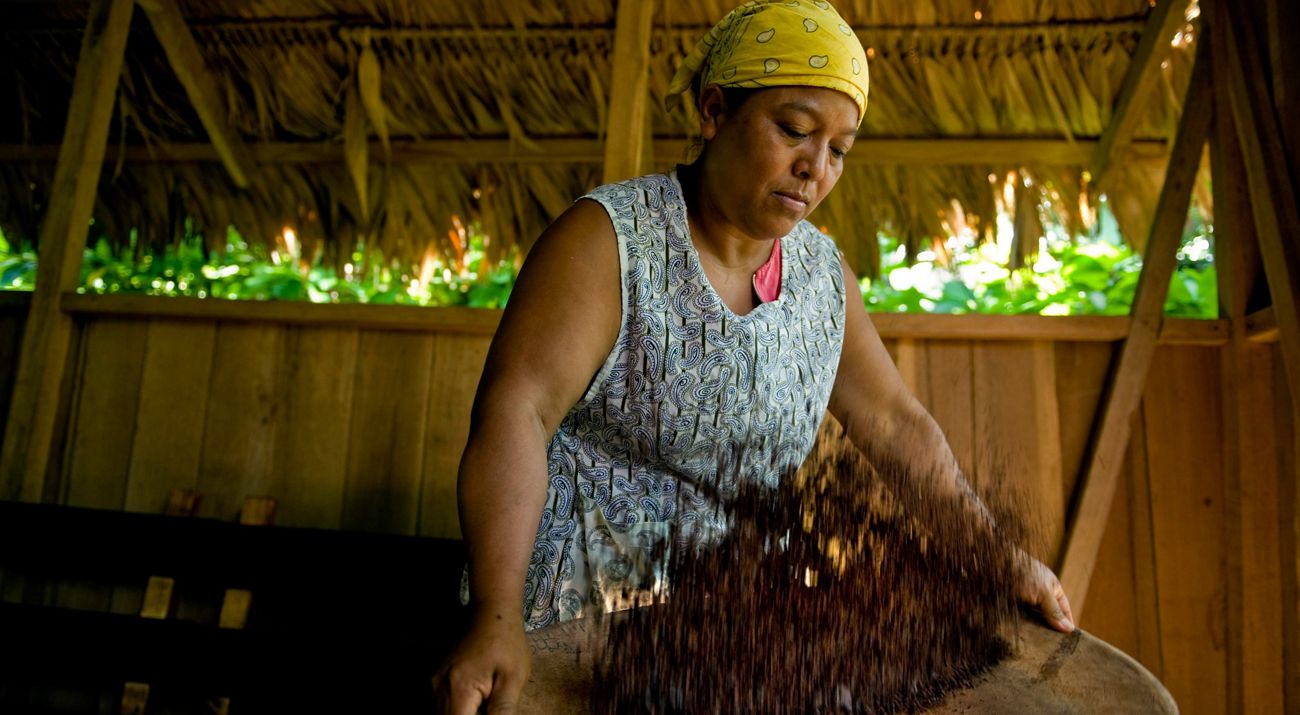
Costa Rica
In Costa Rica, There's Strength in Numbers. Tourists are lured to Costa Rica by its lush forests, biodiversity, accessibility — and chocolate.

By Margaret Southern
A bowl of pure, liquid chocolate and a big spoon. That’s just one of the things that the Bribri women in the Talamanca Indigenous Reserve of southeastern Costa Rica have to offer tourists. But without road access to their eco-lodge nestled alongside the Yorkin River, getting tourists to Stibrawpa (Bribri for “women’s house”) was difficult.
It was this challenge that sparked the creation of the Conservancy-coordinated Indigenous Eco Tourism Network. While many of the different indigenous communities buffering La Amistad International Park were interested in ecotourism, many of the groups didn’t have all the resources required to host guests. Working together, 17 community groups could offer a more complete experience for travelers seeking an indigenous experience and a glimpse into forest life.
Why Tourism?
With its lush forests, biodiversity, and proximity to the port of Limón, the Talamanca region is a natural ecotourism destination. Tourism is a good source of income for the indigenous people not only because it allows them to maintain their natural resources, but it also gives them the opportunity to share, and therefore strengthen, their culture. A reverence for the environment has always been a fundamental part of the local indigenous cultures.
“Natural resources have been part of our culture for thousands and thousands of years. It’s our means of sustenance, it’s our means of communication, our means of harmony,” said Eusebio Chorly Morales, technical assistant for La Finca Educativa, one of the 17 community groups. “We’ve always limited ourselves. We never take more from the forest or the river than we need.”
But the indigenous groups here are struggling—not only to meet the basic needs of health and livelihood, but to keep tangible and spiritual links to their ancestors through the forest and culture. Some people had given up and sold trees or land for profit, breaking the ancestral rules of stewardship.
Morales believes that the biggest impact of the network will be on the preservation of natural resources. The jobs created by the network will eliminate the need for locals to make money from illegal logging.
The Conservancy’s Role
The Conservancy has helped the members of the Indigenous Eco Tourism Network (known in Spanish as Red Indígena de Eco Turismo, or “la Red”) come together and develop an operational structure. After the Conservancy’s feasibility study brought all the groups to the same table, a donation helped the network begin an institutional strengthening process: workshops and training in tourism, marketing, and conservation; promotional materials; and ongoing support and follow-up.
Training has been a key element in the development of la Red. Members of each group have taken workshops on everything from the basics of tourism and marketing to the importance of conservation and how protected areas work. Conservancy funding facilitated training for 125 people and allowed for one member of each group to take a one-year class on entrepreneurship.
Next Steps
La Red is currently building off their tourism and marketing training by developing a three-year strategic plan through a grant from the Conservancy. The plan will allow the groups to determine how to strengthen their tourism services by working together, develop a legal structure, and create a specific marketing plan.
Miriam Morales Marin, a member of Stibrawpa for 15 years, hopes that the network, along with their community’s investment in education, will create new opportunities for young people closer to home. Keeping the younger generation within the community is an important aspect of preserving the culture and passing on lessons of conservation to the next generation.
“This organization is a small seed. And hopefully the young people will help pass the lessons on,” Miriam said.
Until a real office can be built for la Red, the education center at La Finca Educativa has been serving as the official meeting place, and Chorly as an unofficial leader. Chorly hopes that the office will be built in an impartial location because, even though he enjoys facilitating the process, he wants all 17 groups to feel equally involved.
“Creating this network has been a big challenge,” Chorly said. “Working with all these strong leaders isn’t easy, it’s difficult to make any decision — but I’m very excited.”